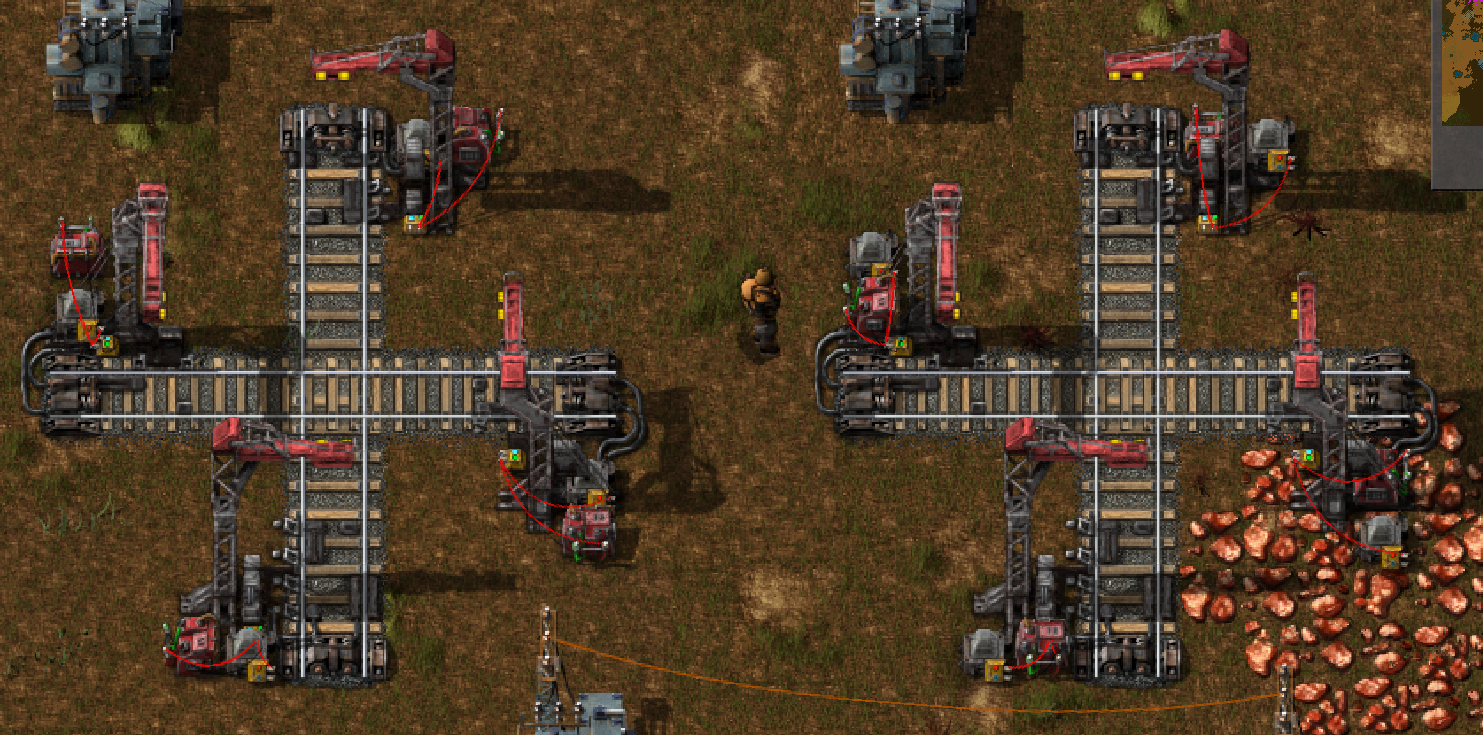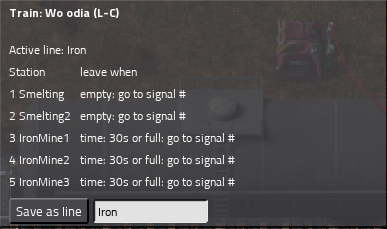I guess right now I'm confused how this works in 0.13, especially concerning the roles of the lamp and the Vanilla circuit conditions, respectively. I hope you can clear it up for me.
What I assumed is that the "circuit condition" that is set in the schedule (like on a Vanilla 0.13 train stop) is what replaces the condition on the lamp.
I also assumed that the relevant signal is determined by looking at the condition.
What do I mean by "relevant signal"? Well, what if you set several signals simultaneously (on the lamp or whatever the appropriate input is)? Let's say I set "red 1" and "green 3" on the lamp, will it then send the train to station #1 or station #3? I have never tried this but I always assumed that you need to set a condition (on the lamp) that explicitely names a single signal, and this signal is then taken.
But what if you set the condition "anything > 0" on the lamp and then input multiple signals? Are the signals then ignored, because the "anything" condition does not tell you what signal is relevant?
Now, if I understand you correctly, the "leave" condition would be taken from the Vanilla schedule, but the "jumpTo" value would be taken from the lamp. Is that the reason why you did connect lamp and station at first when putting down a station?
Is the lamp condition copied into the Vanilla schedule when the line is updated?
Some of my assumptions are because you talked about removing the lamp entirely, so I thought it's now only there for decoration/as an indicator, and the Vanilla condition is what counts.
So I hope I'm making sense and you can explain this to me.
Right now I feel it's a little confusing and complex, maybe it needs to be simplified. That was actually the thought behind my proposal.
[*]If the train left the station early, SmartTrains check if jump to signal/jump to is set. If jump to signal is set, it gets the signal value from the lamp and jumps accordingly to that value
Yes, but what if there is not a single "signal value" on the lamp, but there are multiple signal values. What value does it take, then? I assumed it needs the condition then to filter the value of interest, but that wouldn't be possible if the condition uses "anything" or "everything".
- The signal set in the lamp is what counts
See above, how do we resolve multiple values on the lamp?
[*]You only need to set it once, and having the "leave condition" in the schedule allows combining multiple conditions, e.g. Destination signal > 0 AND "red signal > 0", that way deactivating your system only requires setting red to 1, without having to add additional combinators. Your scheduler acts/will act on the pulsing of the destination signal i guess and if no train leaves there is no pulse so it won't get confused/messed up?[/list]
I havent checked the operator precedence of AND/OR in the schedule (is A and B or C equal to (A and B) or C or equal to A and (B or C)) but i think it could be quite powerful and even save a few combinators at each station?
I'm still confused if and why I need the destination signal in the schedule. If the destination signal is taken from the lamp it wouldn't have to be in the schedule, or would it?
For the scheduler this is not really a problem, as long as I have a way to know when the train has left the station and as long as I can rely on the correct signal number being used for the jumpTo we're all set.
I'm just terribly confused about the station vs. lamp situation right now.
Ignoring the overlappings, i think the right one looks slightly better (as in: easier to see whether lamp or combinator are connected) Southern stop will need to have the connector sprite moved since right now it's under the combinator.
The right one looks better and it's what I had in mind. The lamp is more prominently visible.

